Just south of the border with Scotland, Northumberland is one of the largest counties in England – and arguably one of the prettiest. Despite being so large, there are no cities in Northumberland; the closest is Newcastle upon Tyne, which is a county in itself. However, there are a number of market towns, such as Alnwick, Morpeth and Amble.
Northumberland is also famed for its natural beauty. In the east, the coastal route stretches along windswept beaches punctuated by castles and picturesque villages, while in the west, you have Kielder Forest, one of the best places in England for stargazing.
Because of its proximity to Scotland, Northumberland has a bloody and brutal history, with more castles than any other English county. In this post, we’ll take a look at some of the most impressive and important castles in Northumberland.
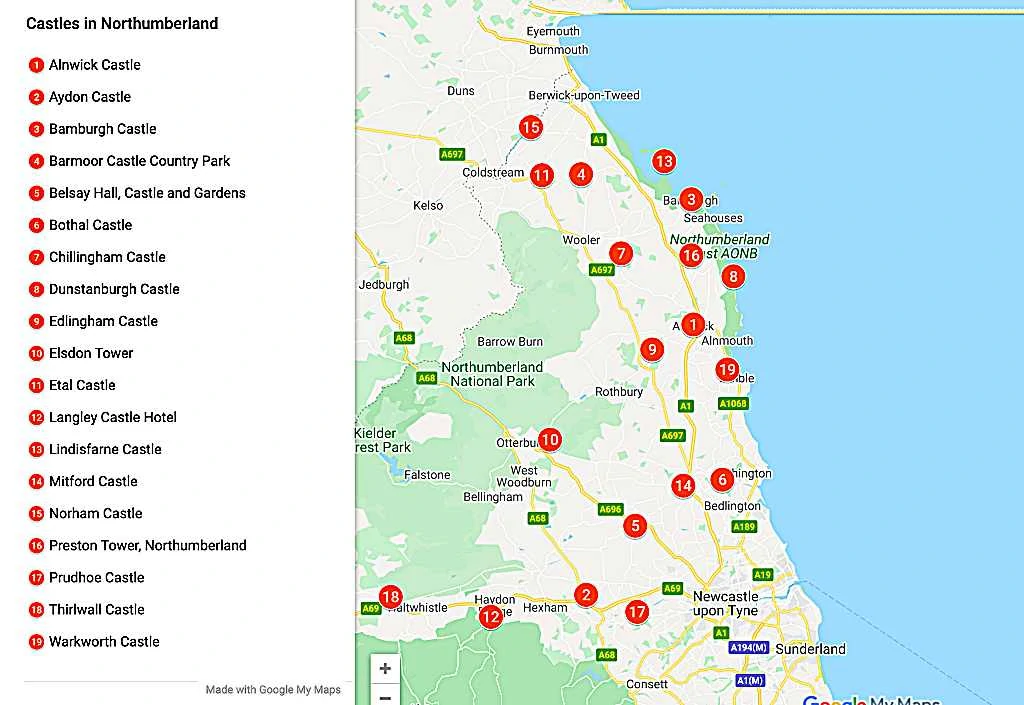
19 Castles to Visit in Northumberland
1. Alnwick Castle
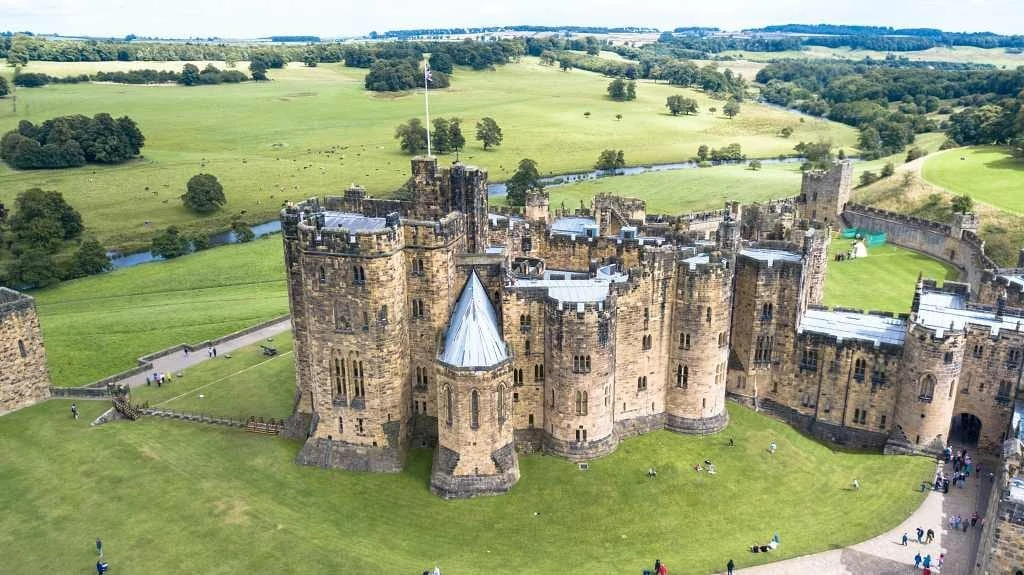
Alnwick Castle is the second largest inhabited castle in the UK and is often dubbed the Windsor of the North. It’s home to the Duke of Northumberland and has been so for more than 800 years.
The castle is one of the most popular days out in the North of England. Visitors can also see the Alnwick Gardens and its unusual but fascinating poison garden. You may feel like you’ve seen Alnwick Castle before, as it has starred in both Downtown Abbey and the Harry Potter films.
Where: Alnwick
When: 11th century
Open for visit: Yes. Check here for more information.
2. Aydon Castle
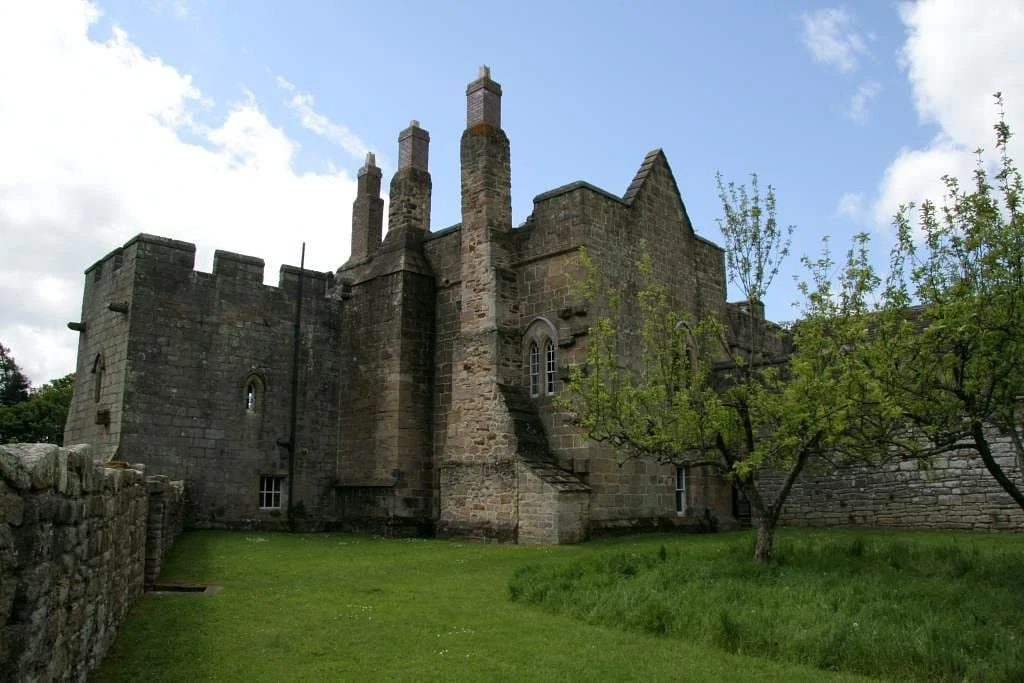
Just outside of the charming village of Corbridge, you’ll find Aydon Castle, an almost unaltered example of a 13th-century manor house. With the outbreak of war between England and Scotland in the 14th century, the house was fortified, but it was still pillaged and burned.
In the 17th century, the castle became a farmhouse and was occupied until 1966. The castle is surrounded by woodland, and there are plenty of places nearby where you can go for a walk or a picnic.
Where: Near Corbridge
When: 13th century
Open for Visit: Yes. Check here for more information.
3. Bamburgh Castle
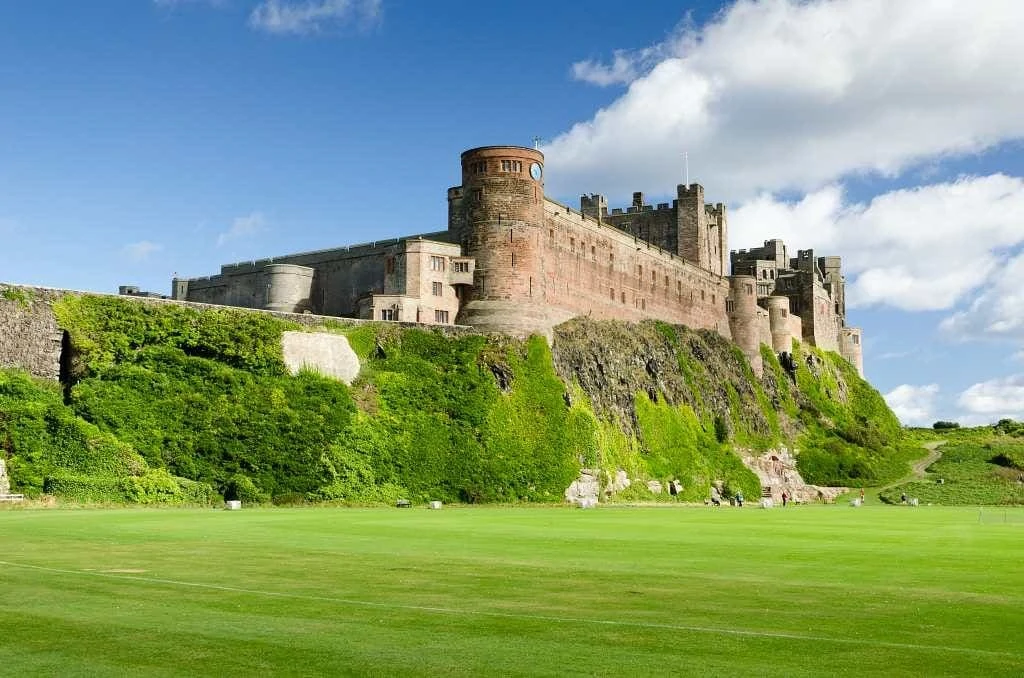
One of the most evocative and impressive sights on the Northumberland Coast, Bamburgh Castle sits atop a rocky outcrop looking out over the North Sea. It is a Grade One listed building and is known as one of the finest castles in the UK.
The iconic fortress was home to the ancient Kings of Northumbria, and there have been settlements on the site since prehistoric times. You’ll often find archaeologists working on digs there, especially in summer.
As well as visiting the castle, no trip to Bamburgh is complete without a bracing walk on the beach and fish and chips from the nearby village of Seahouses.
Where: Bamburgh
When: 11th century
Open for visit: Yes. Check here for more information.
4. Barmoor Castle

In England, you can’t get much closer to Scotland than Berwick-upon-Tweed. The town has passed between the two nations several times. A little out of the town centre, you’ll find this Grade II listed building, Barmoor Castle.
There have been castellated buildings on the site long before the current incarnation, which was built in 1801 – with a tower house built in the 14th century here. Nowadays, Barmoor Castle is part of a holiday park.
Where: Lowick, Berwick-upon-Tweed
When: 19th century
Open for Visit: Yes. Barmoor Castle is a holiday park, and you can visit the castle or stay overnight in one of the caravans on site. Check here for more information.
5. Belsay Castle
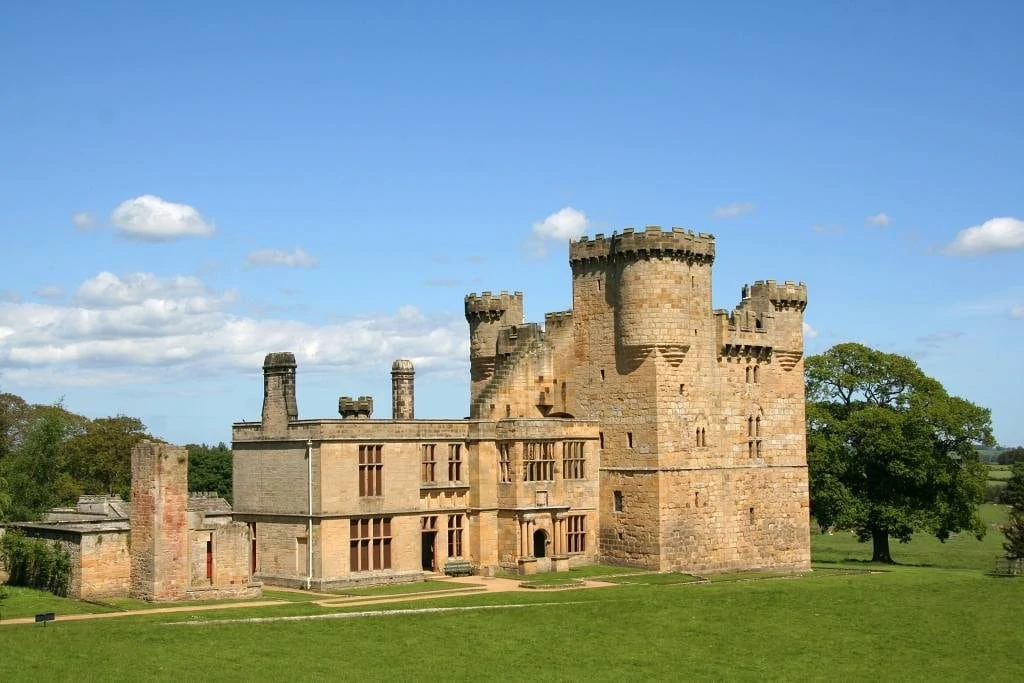
Belsay’s medieval castle is a well-preserved ruin that dates back to the 14th century. It was a refuge during the Anglo-Scottish wars, and you can explore the maze of rooms that are still intact.
There are some traces of medieval war paintings, while the cooking range and fireplaces are still clearly visible. The castle is part of a complex where there is also a hall and gardens, all of which you can visit with one ticket. Belsay Hall is the first British country house to be built entirely in the new Greek Revival style.
Where: Belsay
When: 14th century
Style: Medieval
Open for Visit: Yes. Check here for more information.
6. Bothal Castle

Hidden away in a village of the same name, Bothal Castle is one of the lesser-known castles in Northumberland. It is between Morpeth and Ashington overlooking the River Wansbeck.
There has been a castle on the site since before the Norman conquest when it was fortified. The castle has been worked on in the subsequent centuries; while it is in a good state of repair, it is not accessible to the public.
Where: Bothal, Morpeth
When: 14th century
Open for Visit: No
7. Chillingham Castle
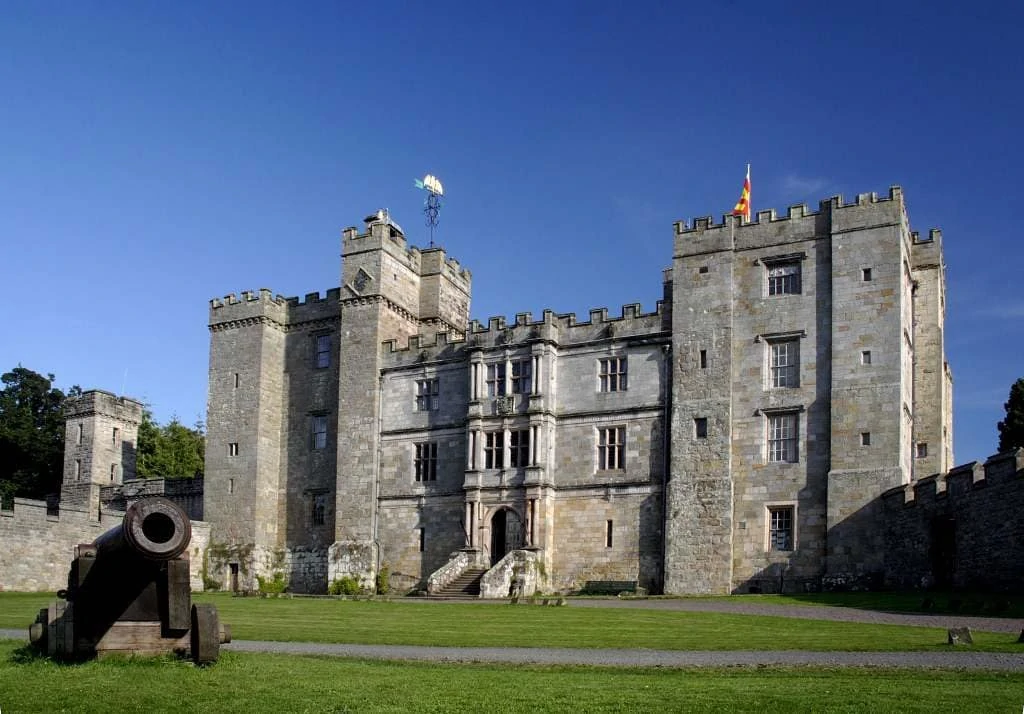
Said to be the most haunted castle in England, stories about this place put the chill in Chillingham. It has one of the highest levels of paranormal activity in the country, and there are said to be at least four ghosts, including the White pantry ghost.
It’s said that you can hear voices in the chapel and see shadows coming to life in the moonlight in the courtyard. For those who are sceptical of ghosts, you could instead choose to visit the wild cattle of Chillingham, a rare breed that isn’t found anywhere else.
Where: Chillingham
When: 14th century
Open for Visit: Yes. The castle also has eight suites, and you can stay overnight. Check here for more information.
8. Dunstanburgh Castle
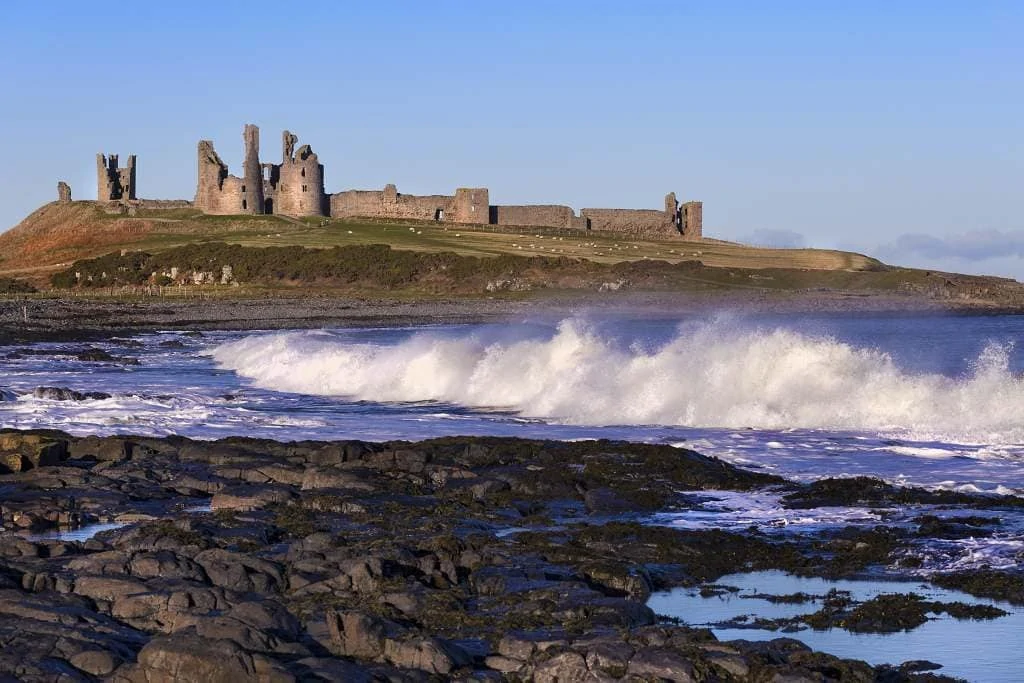
Although the ruins that you see today date back to 1322, Dunstanburgh Castle was built upon the foundations of an existing iron age fort. The walk between the villages of Craster and Embleton on the rugged Northumberland coast is an excuse to visit the castle alone.
Once you arrive on this remote headland, you’ll see a castle that was twice besieged in the War of the Roses before falling into decay, although the twin towers of the keep are still intact. Seafood lovers should try smoked kippers in the Craster.
Where: Near Craster and Embleton
When: 14th century
Open for Visit: Yes. Check here for more information.
9. Edlingham Castle
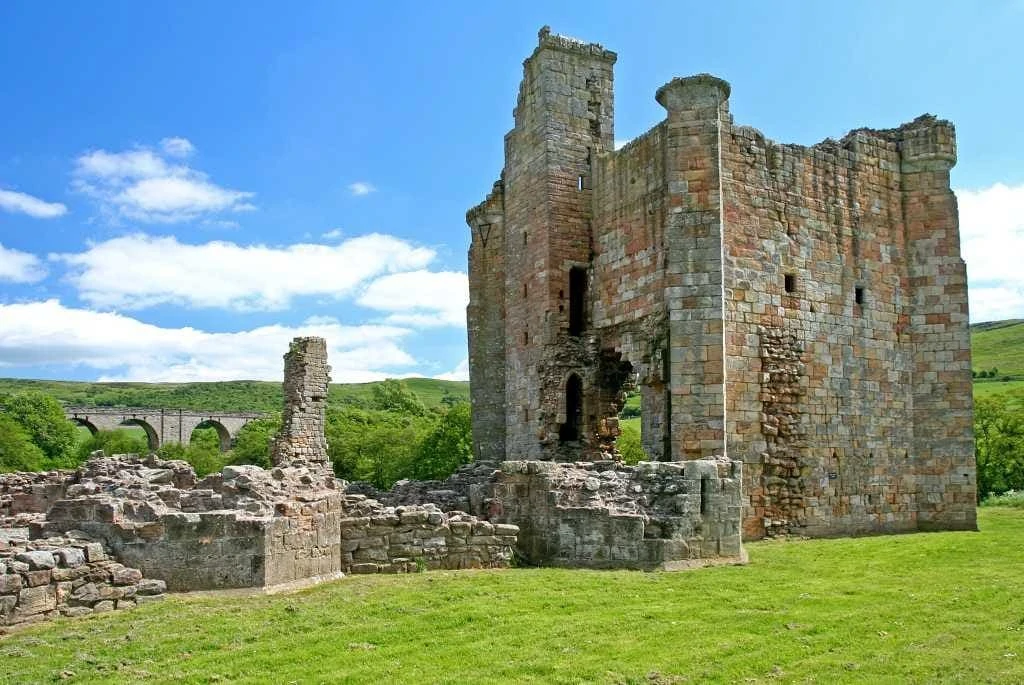
Another castle near the market town of Alnwick, Edlingham Castle is the ruin of a fortress on a hilltop overlooking the River Coquet, once home to the Percy family who lived in Alnwick Castle.
It was voted one of the top three castles in Northumberland, and it’s known for having a leaning tower. The castle has Grade 1 listed building and Scheduled Ancient Monument status.
Where: Edlingham
When: 14th century
Open for Visit: Yes. Open 24 hours. Check here for more information.
10. Elsdon Tower
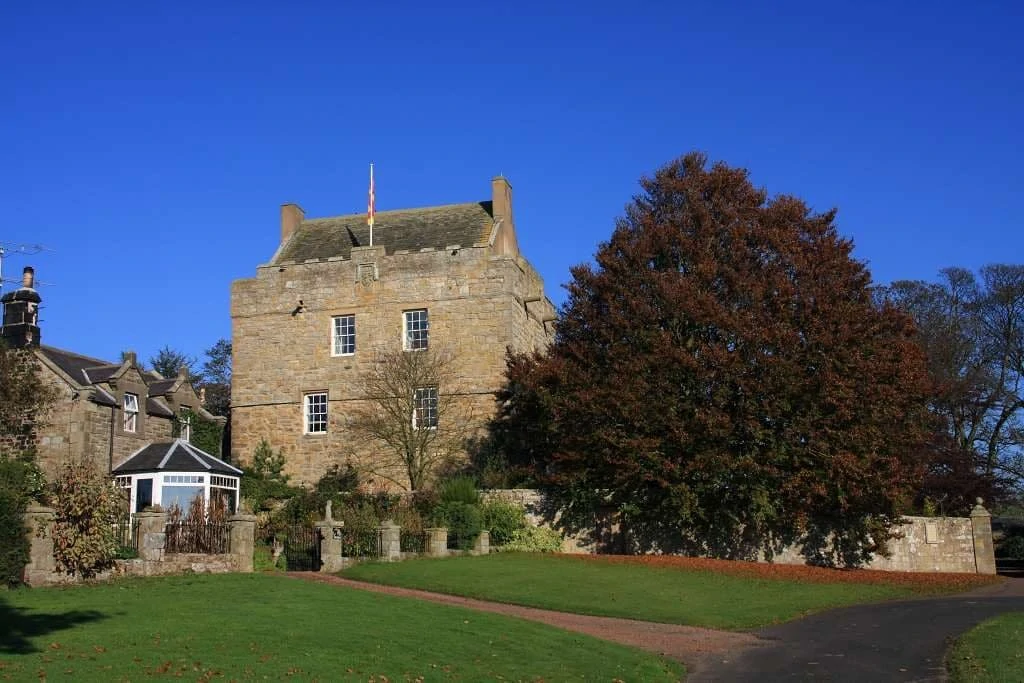
Near the village of Otterburn, Elsdon Tower was first recorded as a Pele tower in 1415 – the home of a vicar. The medieval tower house has been modified several times since its construction but is now a private residence. There is no public access.
Where: Elsdon
When: 15th century
Open for Visit: No. The tower is a private residence but can be viewed from afar.
11. Etal Castle
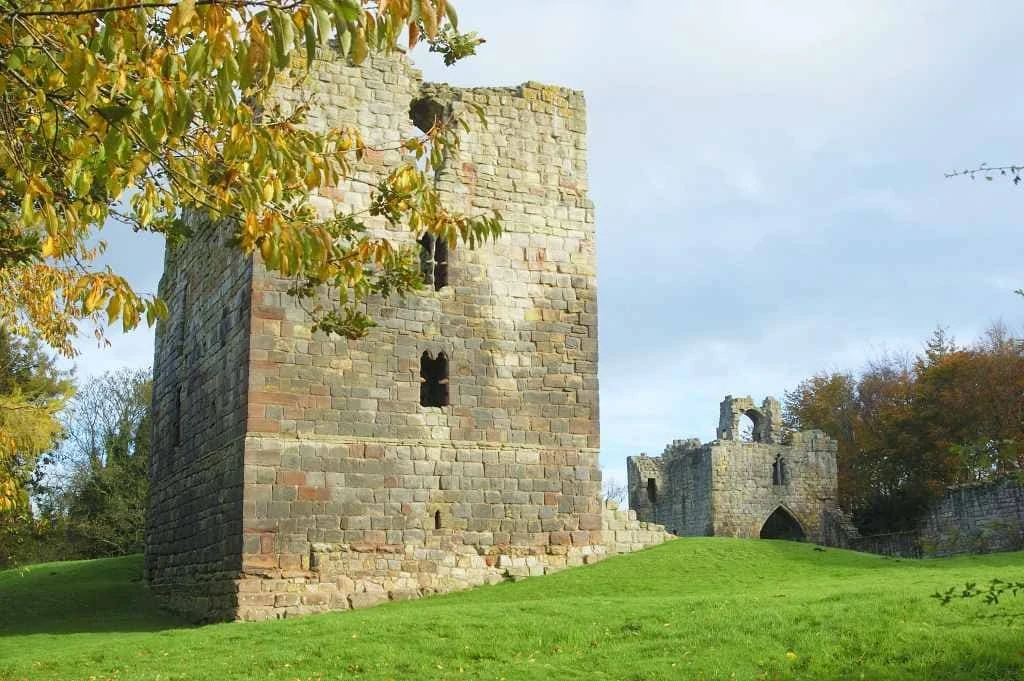
Built in the middle of the 14th century, Etal Castle was initially a defence against Scottish raiders. The castle fell to the invading Scottish in 1513, before being defeated at nearby Flodden.
There is a lot going on in the area around Ford and Etal, including a light railway, heavy horses, and lots of outdoor adventure activities. Etal Castle is only small, and a visit shouldn’t take long at all, so it’s good to have all these other activities right on its doorstep.
Where: Etal, Cornhill-on-Tweed
When: 14th century
Open for Visit: Yes. Check here for more information.
12. Langley Castle
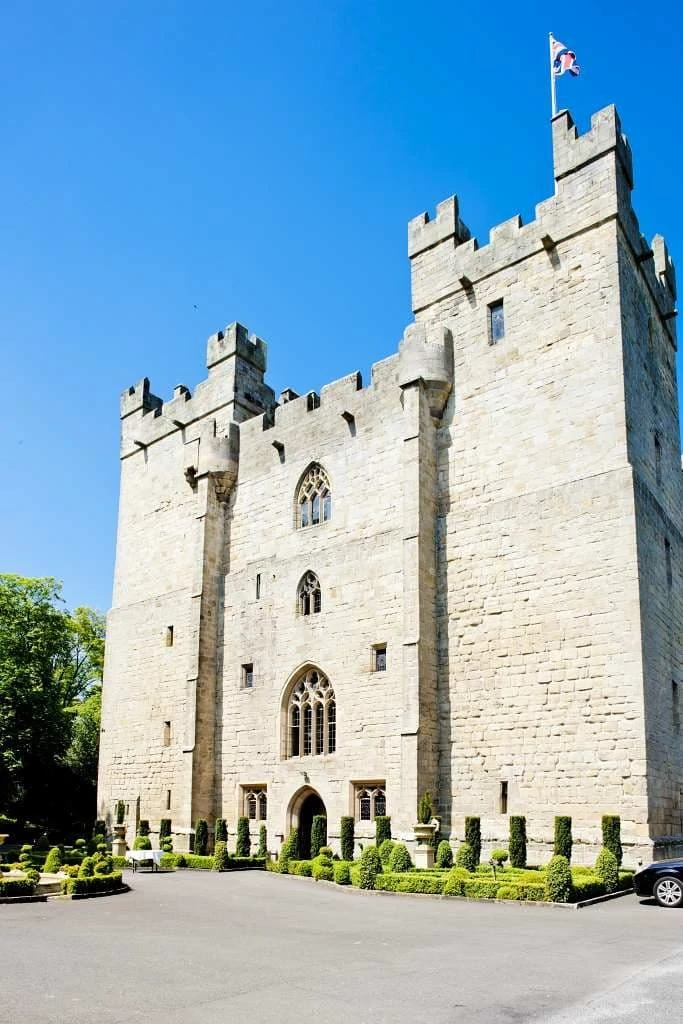
Hidden away in the South Tyne castle, Langley Castle is an excellently preserved medieval fort that is also a hotel. It was built in 1350 during the reign of Edward III.
The tower house is a four-storey Grade One listed building. Before the current structure was built, the previous structure was home to the Barons of Tynedale. The castle is close to the village of Haydon Bridge on the road out to Alston.
Where: Hexham
When: 14th century
Open for Visit: Yes. The castle is a restaurant and hotel and a popular venue for weddings and events. You can find out about private tours of the castle on its website.
13. Lindisfarne Castle
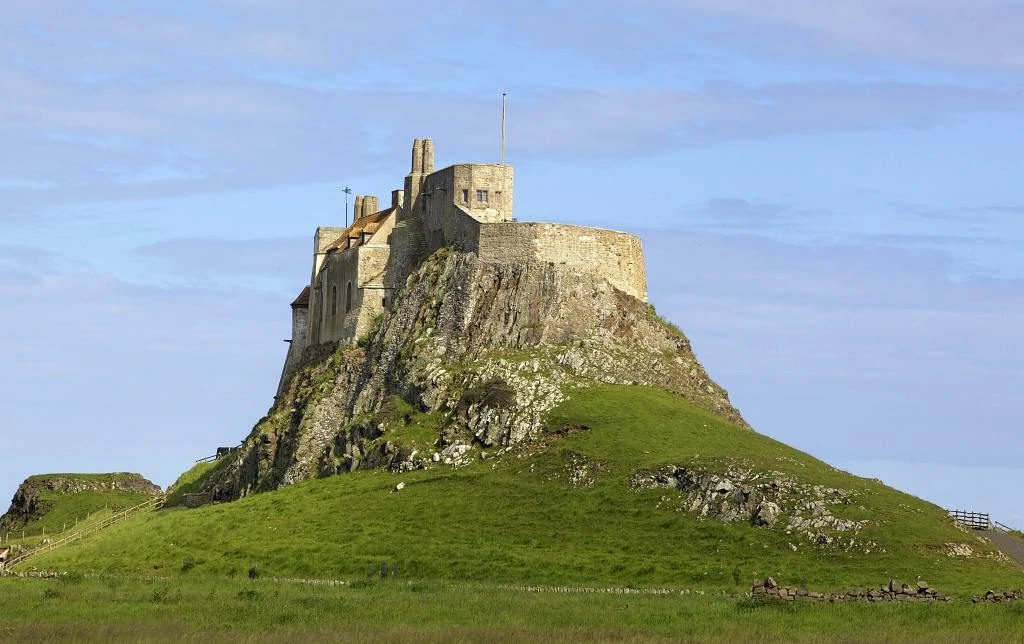
Lindisfarne is only accessible at low tide, so make sure to check the tide times before heading out on an adventure to what is also known as Holy Island. The island was home to a monastery, where the famous Lindisfarne gospels were created – often celebrated as a great landmark in human cultural achievement.
The castle was built long after the monastery and gospels, with the fort being a temporary garrison for soldiers from nearby Berwick. It was restored at the beginning of the 20th century by Edwin Lutyens. When you’ve seen the castle, Holy Island is an excellent place to go for walks and search for local wildlife such as seabirds and seals.
Where: Holy Island
When: 16th century
Open for Visit: Yes, check here for more information.
14. Mitford Castle
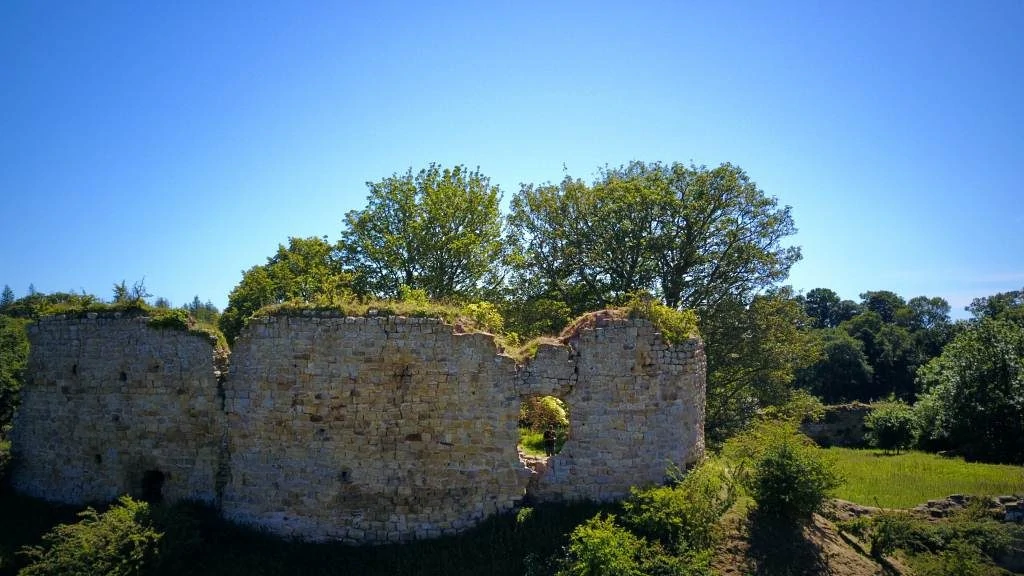
The ruins of Mitford Castle overlook the River Wansbeck near the market town of Morpeth. It was built in 1070 by the Norman Knight Richard Bertram.
The castle was seized by forces acting on behalf of King John in 1215, before briefly being the home of Sir Gilbert Middleton, a notorious kidnapper. The Scots later destroyed the castle. Now, it is a Grade 1 listing and on the Buildings at Risk register.
Where: Mitford
When: 11th century
Style: Norman motte and bailey
Open for Visit: Yes. Open 24 hours.
15. Norham Castle
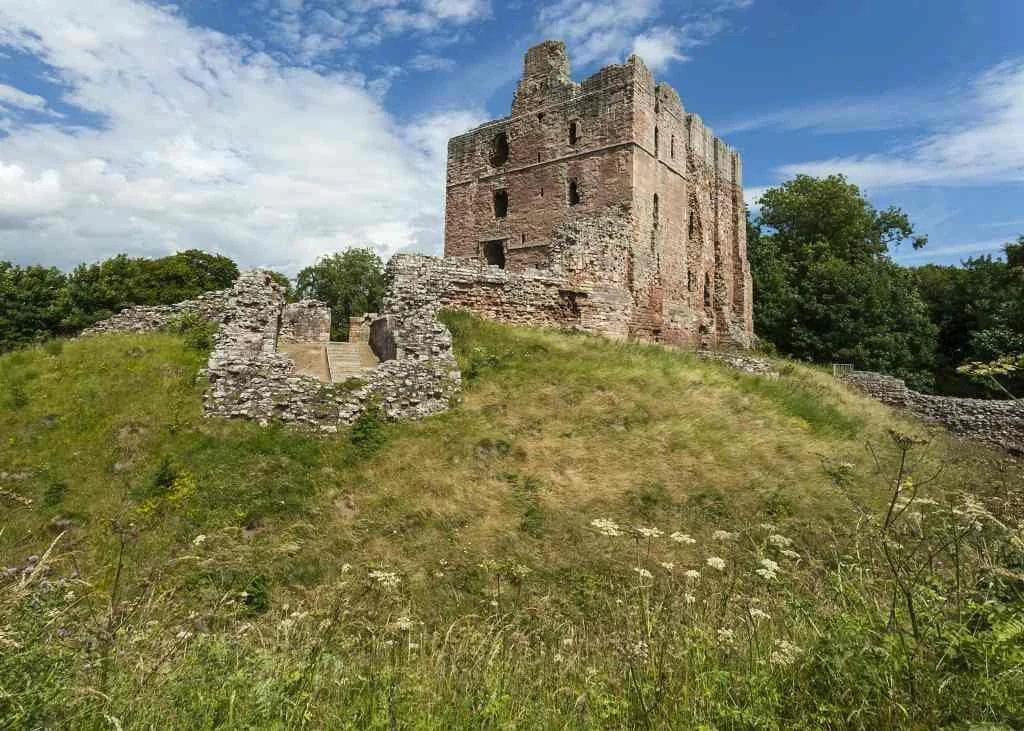
Besieged at least 13 times, it’s no surprise that Norham Castle is little more than ruin. It sits atop a grassy mound commanding a ford over the River Tweed. It was once one of the finest and most powerful strongholds in the turbulent border region. However, the keep finally fell to a heavy cannon in 1513 before James IV was defeated at Flodden Field. The castle is free to visit.
Where: Berwick-upon-Tweed
When: 12th century
Open for Visit: Yes, check here for more information.
16. Preston Tower
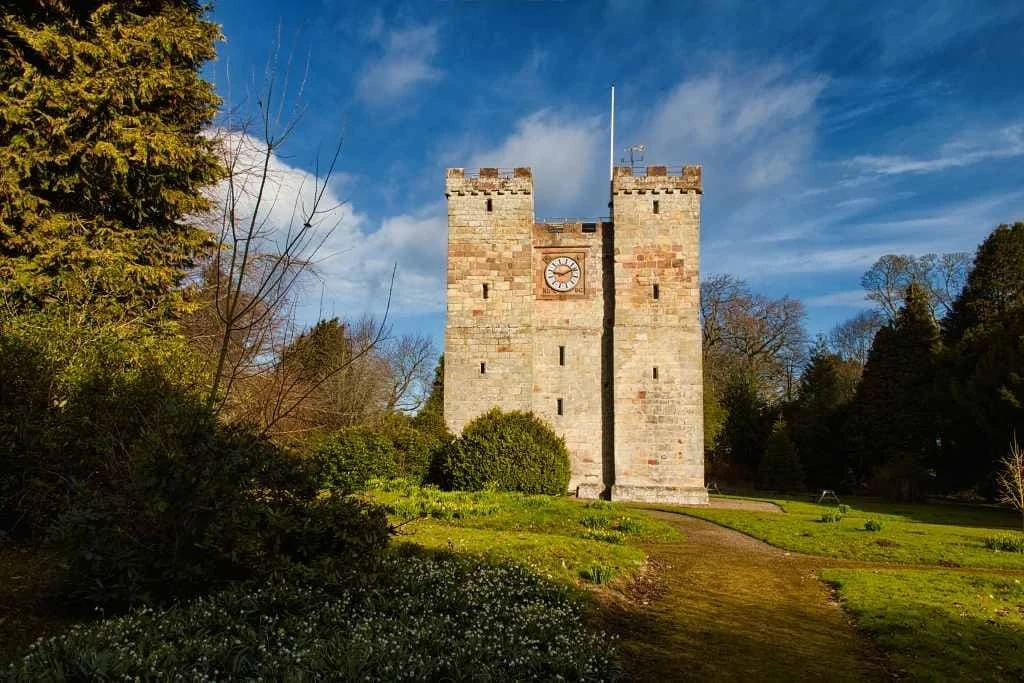
Preston Tower is a Pele tower that was built at the end of the 14th century, one of 78 across the county of Northumberland. Seats of border families needed thick defensive walls to protect them from border raiders (reivers), and Preston Tower is one such example.
Half of Preston Tower was torn down at the beginning of the 1600s, and what you can see now is the remainder of that. Preston Tower is surrounded by gardens and parks, which make for a nice walk.
Where: Preston, Chathill
When: 14th century
Open for Visit: Yes. Check here for more information.
17. Prudhoe Castle
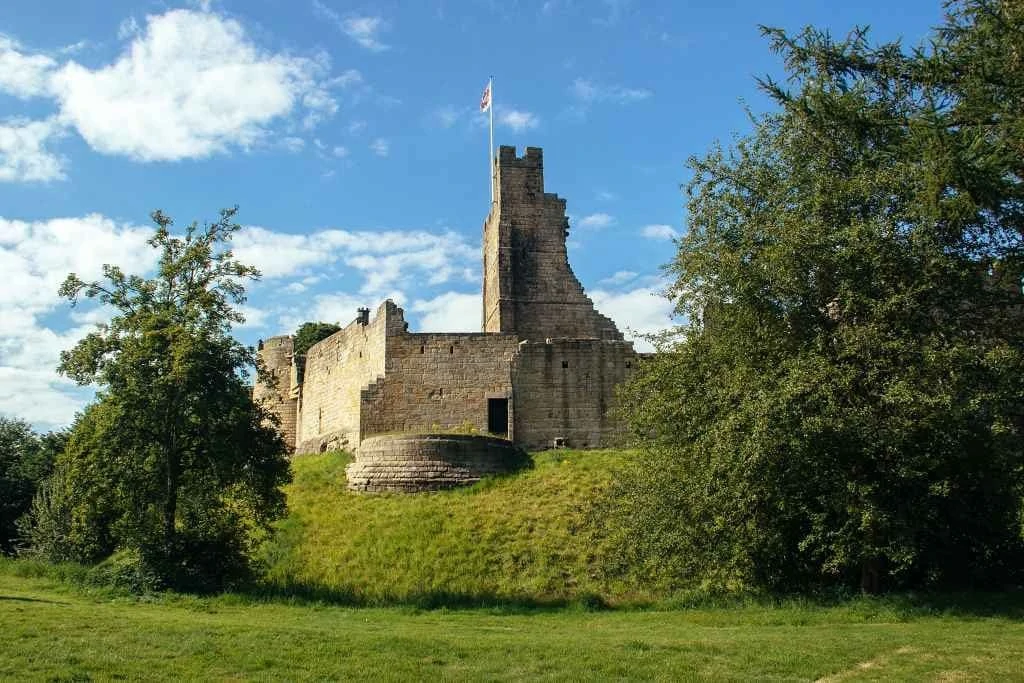
Prudhoe Castle is one of a series of castles that were built along the River Tyne after the Norman Conquest in 1066, to protect against Scottish invaders. It was continuously occupied for over nine centuries before being sold to English Heritage.
It went on to become the only castle in Northumberland never to be taken by force by a Scottish army. It stands in a picturesque location, and there is a pretty walking trail along the banks of the River Tyne nearby.
Where: Prudhoe
When: 11th century
Open for Visit: Yes. Check here for more information.
18. Thirlwall Castle
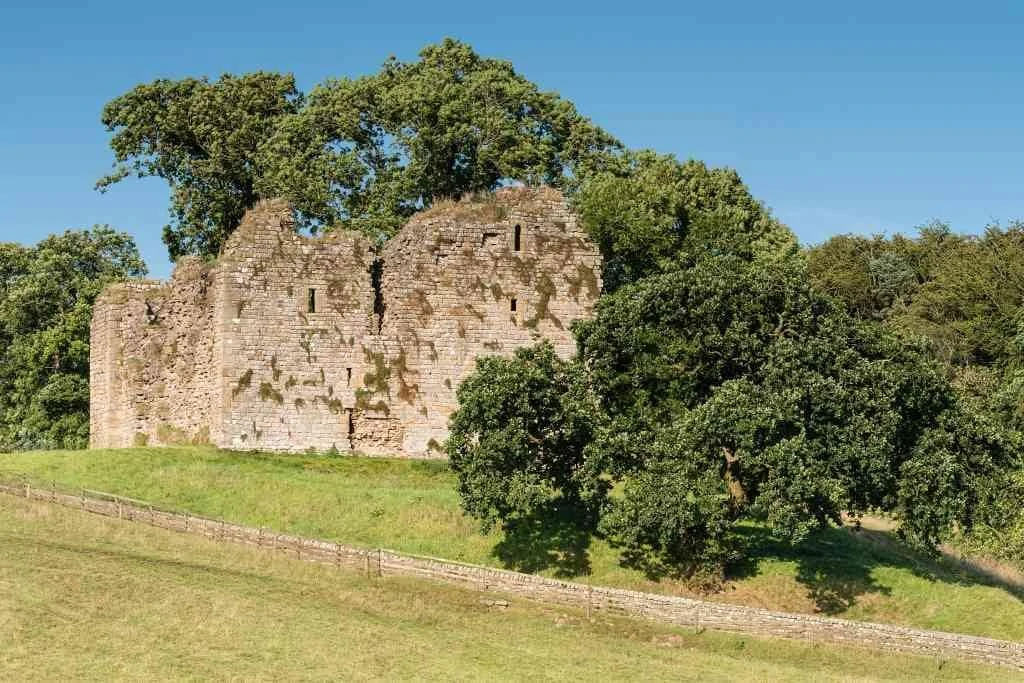
One of the most westerly castles in Northumberland, Thirlwall Castle is close to the border with the county of Cumbria. It was built in the 12th century, then strengthened with stones from Hadrian’s Wall in the following centuries.
Although it’s a Grade 1 listed building, it is mostly in disrepair and ruin. The walk to Thirlwall Castle from the nearby village of Greenhead is easy and enjoyable.
Where: Brampton
When: 12th century
Open for Visit: Yes. Open 24 hours
19. Warkworth Castle
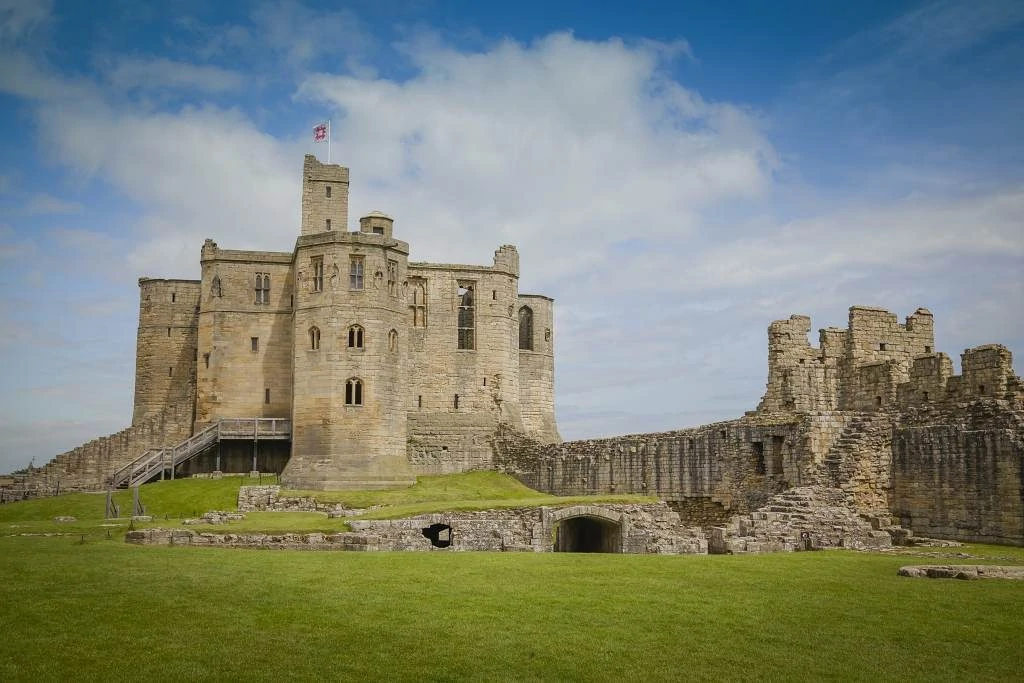
Much of the small seaside village of Warkworth is taken up by its enormous castle. Although much of the interior is ruined, most of the exterior walls of this hilltop hermitage are intact.
The former home of the Dukes of Northumberland overlooks the River Coquet and boasts an unusual cross-shaped keep. There’s also a chapel, great hall, and gatehouse, which you can admire.
It’s slightly harder to get to the nearby Hermitage: half a mile from the castle and only accessible by boat, the cave was the home and chapel of a holy man who lived alone.
Where: Warkworth
When: 12th century
Style: Medieval
Open for Visit: Yes. Check here for more information.
